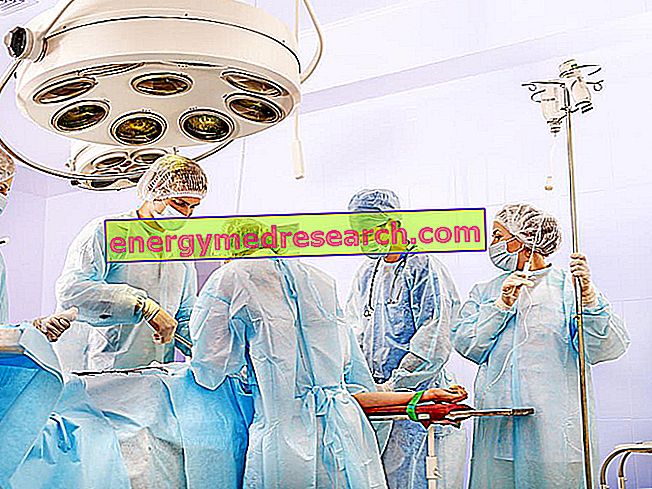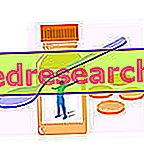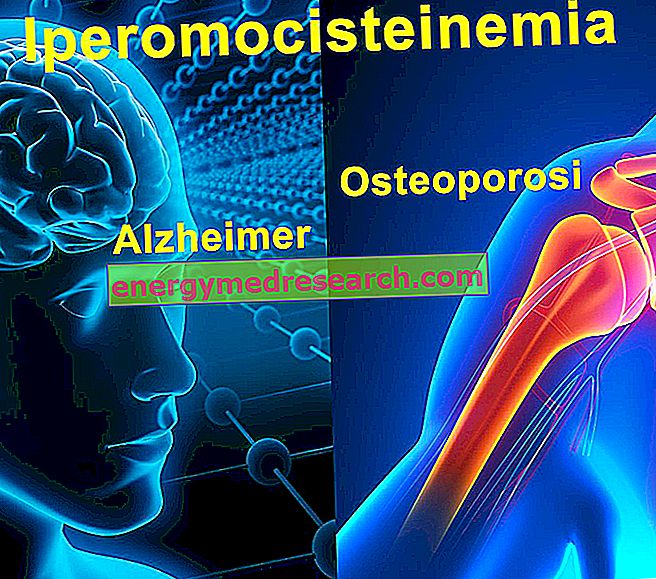Definition
Kidney stones are small aggregates of mineral salts (calcium, oxalate, phosphates and uric acid) that form in the urinary tract: by obstructing the physiological flow of urine, kidney stones cause sharp and stabbing pain.
Causes
Following an unbalanced and incorrect diet, especially in the case of genetic predisposition, heavily affects the formation of kidney stones. Risk factors include urine acidity, low fluid intake, dehydration, advanced age, chronic urinary tract infections, hyperthyroidism, white race and male sex.
Strong and acute renal colics are a lit indicator of kidney stone: the two disorders are closely related.
Symptoms
The excruciating and acute pain, located at the side at the height of the affected kidney, is certainly the typical symptom that unites the various forms of kidney stones. The symptomatic picture is completed by: chills, dysuria, fever, nausea, blood in the urine, smelly / dark urine and vomiting.
Information on kidney stones - drugs for the treatment of kidney stones is not intended to replace the direct relationship between health professional and patient. Always consult your doctor and / or specialist before taking kidney stones - drugs for the treatment of kidney stones.
drugs
In most diagnosed cases, kidney stone is spontaneously expelled within 48 hours of symptom onset, after adequate fluid intake and, possibly, analgesic drugs.
Drug therapy is essential for eliminating kidney stone, relieving pain and preventing the formation of new mineral aggregates in the kidneys.
Antispasmodic drugs : particularly indicated in the case of kidney stones, as they reduce the smoothness of smooth muscles. To be administered exclusively when the progression of the calculation - therefore its elimination - is unlikely, due to its structure and size.
- Scopolamine butylbromide (eg Buscopan, Addofix, Erion): indicated to relax the smooth muscle of the genitourinary tract. It is recommended to take 1-2 tablets of 10 mg 3 times a day for adults and children over the age of 14 years. In the case of children between the ages of 6 and 14, it is essential to consult a doctor before taking the drug.
- Atropine sulfate (eg Atropine Lux): useful in case of smooth muscle spasm. Generally, the drug is administered by subcutaneous or intramuscular injection, at a dose of 20 µg / kg (maximum dose 600 µg). In general, this medicine is recommended along with painkillers.
- Belladonna and papaverine clohydrate (eg colic antispasmin): the belladonna has an anticholinergic action, reducing the spasm of the smooth muscles (significant reduction of pain). Take 2-6 confetti - consisting of 10 mg of papaverine and 10 mg of belladonna - per day for the average pain caused by renal colic. In case of severity, take 1-3 tablets of 50 mg of papaverine and 10 mg of belladonna per day.
Analgesics (NSAIDs): attenuating pain, the pain-spasm alternation is less favored, without however interfering with urethral peristalsis: in this way the patient can spontaneously and with less suffering eliminate the calculation.
- Petidina (eg Petid C): for acute pain, take a dose equivalent to 50-150 mg every 4 hours, depending on the severity of the colic. For subcutaneous injection, administer 25-100 mg and repeat the application after 4 hours. For intramuscular injection, administer 0.5-2 mg of active ingredient per pound of body weight. Alternatively, for slow intravenous infusion, it is recommended to administer the drug at a dose of 25-50 mg (repeat after 4 hours).
- Diclofenac (eg Fastum Painkiller, Dicloreum): preferable to pethidine. Take 50 mg of drug orally 3 times a day (tablets); in some patients, an initial dose of 100 mg is required, and then changed to 50 mg. After the first day, the total daily dose should not exceed 150 mg.
- Ibuprofen (eg. Noan, Vatran, Pedea): for moderate pain, it is recommended to administer 200-400 mg of the drug every 4-6 hours as needed. The active ingredient can also be administered parenterally (intravenously), administering 400-800 mg for 30 minutes every 6 hours, as needed.
Antiemetics : these drugs are a valid aid to quell vomiting. For example, the active substance scopolamine butylbromide (previously analyzed) is also used to relieve spastic pain in the genitourinary and gastrointestinal tract, soothing pain-induced nausea and vomiting.
Kidney Stones: Symptoms, Diagnosis and Treatment
X Problems with video playback? Reload from YouTube Go to Video Page Go to Wellness Destination Watch the video on youtubeDepending on the type of mineral making up the calculation, the doctor can prescribe useful drugs to reduce the formation of the aggregate, or otherwise help to fragment the newly formed calculation (thus favoring the spontaneous elimination of the same). The choice of a drug rather than another depends on the severity of the problem and the type of mineral making up the calculation.
- Allopurinol (eg. Zyloric, Allurit, Allopurinol FN): indicated for the treatment of uric acid stones. Initial administration of 200-300 mg orally per day is recommended, followed by maintenance therapy (300 mg / day or less, as determined by the doctor).
- Antibiotics: recommended for struvite stones (phosphate, ammonium and magnesium). Remember that this type of kidney stones is favored by a bacterial infection; therefore the doctor, after isolating the pathogen responsible for the infection, will prescribe the most suitable antibiotic to treat the patient. Generally, a low dose antibiotic therapy is prescribed, consisting in the administration of a mini-dose of the drug in the evening before bedtime, for 2-3 months, changing medication every 7-10 days.
- Thiazide diuretics (eg hydrochlorothiazide: eg Moduretic, Esidrex): indicated in case of calcium aggregates. The choice of the drug and the dosage must be prescribed by the doctor after accurate diagnosis.
- Sodium bicarbonate (eg Sod B, Citrosodina) or sodium citrate (eg Sod Ci, Biochetasi, for urine alkalinization): the alkalizing action favored by the drug is useful for relieving pain and preventing the formation of some types of calculations. Although the dosage must be established by the doctor, it is generally recommended to take 3 g of drug dissolved in water, every two hours so that the urinary pH exceeds the value 7; the maintenance treatment consists in taking 5-10 g per day for a period of time established by the doctor.
- Acidification and alkalinization of urine: this therapy technique is rather complex given that tolerance towards the drug develops rapidly; however, acidifying or alkalizing urine can sometimes prevent the formation of kidney stones. Ammonium chloride, quite effective, taken orally creates vomiting, hypocalcemia and acidosis. Also the administration of ascorbic acid (eg Redoxon, Cebion, Cimille, Univit, C Tard, Agruvit, Univit, Duo C) can be recommended in the case of calculi from oxalates, but in doses lower than one gram per day. Administration of potassium citrate tends to prevent the formation of uric acid and calcium oxalate stones. Always consult your doctor before proceeding with this therapy: in fact, excessive acidity can sometimes be the cause of stones. To learn more: diet and kidney stones.
In 10-20% of cases, the patient is unable to eliminate the kidney stone; therefore an alternative therapy is needed: extracorporeal lithotripsy, intracorporeal lithotripsy, surgical treatment.
For all cases of renal calculosis, hydropinic therapy (introduction of high amounts of water) is essential to facilitate the extrusion of the calculation.



